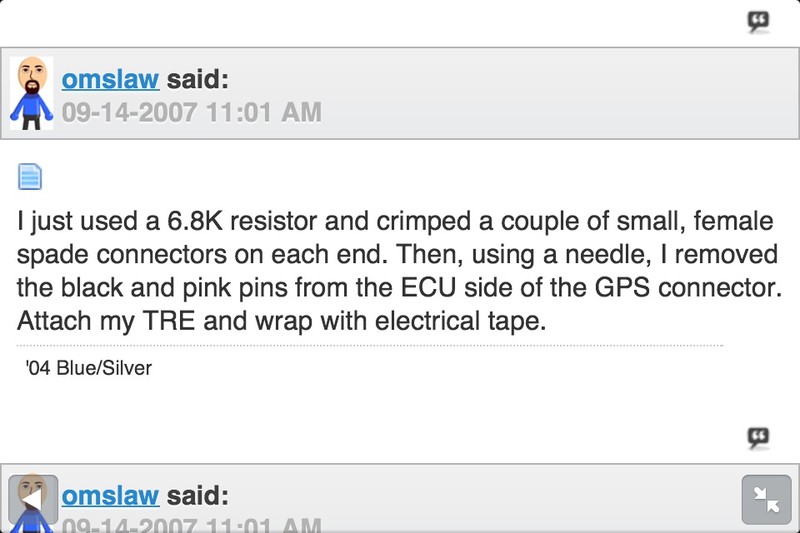Romans, regarding the TRE, its full name is Timing Retard Eliminator which would suggest it does "adjust" the timing.
Let me try to explain old load based ignitions. When say you install an ignition system, there are slots in the timing plate so this can set the timing to set degree. So what you do is remove the VOES [variable operating electronic switch) wire so it is in tre mode. Tre mode is generic for time my advance plate without the linear degrees. In other words, I see 10 degrees btdc, then WOT the throttle, the advance curves to 55 degrees, I set the plate there. When you reinstall the VOES, this returns to analog. So now the VOES has a variable rise, are the numbers being pulled from vacuum: to show a 10-40-55° ignition curve. Whereas, if you removed the wire, it would tre out at 10-55° and that is how you feel that twitch, or faster ignition. It's a fallacy about timing retard. It more eliminated the analog, and now runs in digital. It's either/or is FI and its simple parts (another topic).
There was no way Ivan could explain that way back when when I was asking him. I had it here in a Harley manual all dis time. So, there was no bore to stroke change, meaning, that is still within the ignition range you pull wire. And the GPS may have maps for 1-2, 3-4, 5-6, as in sets. WATT happens to the timing when it it coded? My guess has to be the digital does not, or can't change like the analog can, so each gear is set with the same parameter. So if the map is matched to the gear, to the sub, then yes, I'd have to say there are 3 events happening to that sub move. Gear-which?-rpm = Speed of sub opening. However, in that sub move is the tre move, this is for every gear now is the faster sub, right?
I know on the Suzuki's (had a friend with a GSXR-1000) there was a separate ignition advance map for gears 1-4, the TRE would "trick" the ECU into thinking it was running in 5th/6th gear all of the time allowing for full spark advance.
I may be wrong, but I have to disagree. I would think the IAP is the load base, then this would have to make the fuel to curve both equal, or ignition knock would be rampant, no? So they both meet and greet the load base times TPS and then divided by RPM, which I'm just gathering 3 variables and now calc that mother! It's going to balance in theory, because the parts [output] make the numbers jell.
Now that being said, we've got better bikes :) I haven't personally watched the ignition maps on a code reader to verify this AND the fact that it did adjust the closed throttle fuel tables was a HUGE surprise to me. So I don't know for a fact that Kawasaki created separate ignition maps for each gear, but it would make sense, especially considering that in stock the secondary throttle plates are used in the lower gears to "smooth" out power delivery, if you are changing the throttle you would need to change the ignition as well.
Maybe you are missing this? Those are still load based, not lift based? Maybe that map change was nothing more than low load mapping?
We lift on the IAP, it still is being pulled, not hard is the load, but it is still pulling map under that load times one number is the closed TPS. The other numbers in analog are the loads being pulled out of the IAP sensor. Last are the rpm numbers dropping [in analog] and is that not 3? Forget the other variables like mph speed, what gear we are in? We can saw that trans right off. Think about that engine alone. Now, back to 3 variables call the curve, call the AFR.
So on lift, meaning, we are in stock mode is 18 AFR. We hack to digital, we are now in 16.5 AFR is my bike pops a lot, help! Comes a post. "Oh, got to get a hold of Ivan. Use his block off my fresh air is [lean is the pop], but his pop-eliminator, number tre-? does the trick. But make sure it's this one or the subs can't be used? So this one sets the 16.5 RICH AFR setting, eliminates some popping.'
* Last updated by: Hub on 8/15/2013 @ 9:13 AM *
Tormenting the motorcycling community one post at a time











